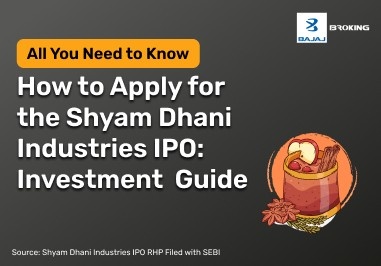Snapdeal is one of India’s leading e-commerce platforms. It showcases good quality merchandise across various price points in order to provide a value-for-money shopping experience.
To ensure engagement on its platform and secure new customers, Snapdeal filed its Draft Red Herring Prospectus (DRHP) with SEBI for a Rs. 1,250 crore IPO in 2021. However, with the low cash flow in the equity market and increasing focus on profitability, the company has currently postponed its decision to launch an IPO.
Keep reading this blog to learn more.
About Snapdeal Ltd
Before investing in any IPO, it is essential that you have an insight into the company. Snapdeal is an organisation that caters to the value e-commerce segment. It started its journey in 2007, selling coupon booklets and over the years has transformed itself into an online e-commerce marketplace.
Now, Snapdeal has over 40.15 million active monthly users, 550 million + monthly page views and a 4.5 rating on Google Play Store. Furthermore, it has a vast delivery network covering almost 96.55% of Indian PIN codes. This enables the company to serve the country's teeming millions, creating a name for its brand in every home.
Snapdeal’s platform provides a wide range of products across categories like fashion, lifestyle, home, beauty and personal care. The platform is known for providing affordable merchandise. Most of the company’s revenue comes from marketing fees, shipping charges and collection fees charged from sellers. Other than its online marketplace, the e-commerce firm provides a variety of SaaS solutions for retailers and sellers.
Snapdeal Ltd IPO Objectives
As per Snapdeal’s DRHP, the company is planning to issue fresh equity shares worth Rs. 1,250 crore, and an offer for sale of up to 3,07,69,600 equity shares. The face value of each share is Rs. 1 and with the generated capital, the organisation aims to increase customer engagement across its platform.
The e-commerce giant plans to retain existing customers by providing a vast array of attractive deals and seasonal offers. Additionally, the platform intends to facilitate a more immersive shopping experience to attract new customers.
The company also plans to ramp up its marketing strategy by leveraging TV commercials, search engine advertisements, social media, short-video platforms, third-party ad networks and influencers.
Snapdeal also plans on investing in its ‘Power Brands’ which will help create a seller network offering high-quality products at affordable rates. Furthermore, using an asset-light model, it aims to create an omni-channel distribution network by creating offline distribution channels.
Additional IPO Details
Snapdeal is yet to release tentative dates for its bid opening and closing, listing, basis of allotment and initiation of refunds. The IPO's price band, lot size, minimum and maximum bid and other related information are also to be released from the company’s end.
The book-running lead managers are BofA Securities India Limited, Axis Capital Limited, JM Financial Limited and CLSA India Private Limited. Moreover, Link Intime India Private Limited is acting as the registrar for the offer, whose website you can visit to check your IPO allotment status.
Simply choose the IPO name, enter your PAN or IPO application number and the platform will show you the latest updates.
Strengths
Here are the strengths of Snapdeal Ltd:
- It is India's biggest pure-play value e-commerce marketplace and is ranked among the top four online lifestyle shopping platforms.
- The company acts as a one-stop shop for all types of value merchandise. What’s more, they are available at pocket-friendly prices from a network of quality-conscious sellers.
- Snapdeal mainly targets the middle-income segment in Tier 2+ cities. By 2026, this shopper base is predicted to increase from 160 million to 350 million. This factor can help take the e-commerce platform's business to new heights.
- Its 'Power Brands' aims to provide variety along with high product quality and affordable pricing.
- Integration of artificial intelligence and machine learning facilitates a personalised and convenient shopping experience.
Risks
The risks of investing in Snapdeal are as follows:
- The company’s marketing efforts may not always let it acquire new customers, which can reduce its revenue.
- Several instances of losses have been recorded in the past, which can continue in the future if the company is unable to increase its delivered units.
- Failure to maintain its reputation or brand image can reduce Snapdeal’s customer base, leading to significant losses.
- The inability to identify or timely respond to changing consumer preferences or spending habits can lead to a decline in operations. This in turn can lead to revenue loss.
- If the company fails to adhere to the terms and conditions of the Google Play Store or Apple App Store, it can have a detrimental effect on its business.
Conclusion
Now that you know all the details of Snapdeal's IPO, you can make an informed choice of whether to invest in this company. Furthermore, keep an eye out for the bid opening and closing dates so that you do not miss out on your chance when the IPO is live.
Disclaimer: Investments in the securities market are subject to market risk, read all related documents carefully before investing.
This content is for educational purposes only. Securities quoted are exemplary and not recommendatory.
For All Disclaimers Click Here: https://bit.ly/3Tcsfuc













